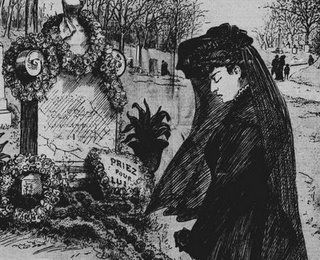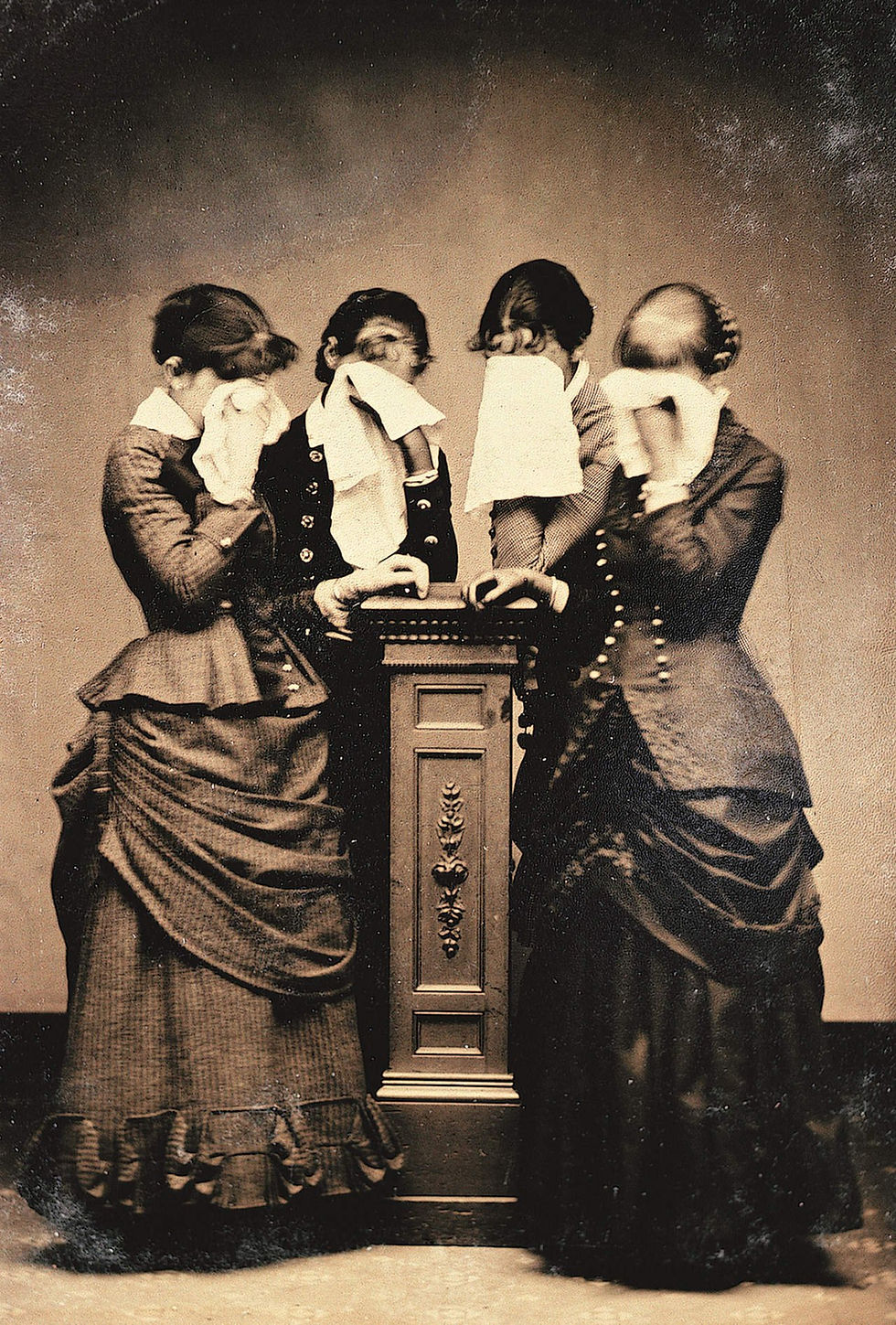Victorian Cult of Death
- Keighton
- Oct 12, 2020
- 4 min read

The Victorian period is named after England’s Queen Victoria, who was the reigning monarch for 64 years. She was Queen from 1837 – 1901, which means you can say the “Victorian” period lasted approximately from 1840 – 1900. This is the time period that will be focused on during this blog post.
When historians study this period, it is glaringly obvious that death was a dominant part of Victorian’s lives, and it greatly impacted their social norms and customs. Death and dying is so prominent, and Victorians are thought to have such an obsession with it, that historians have coined a term for it, “the cult of death.” This phrase implies that the Victorians obsession with death was so great, it resulted in a cult following. Why did Victorians have such an obsession with death, that it seems almost like a cult following? Well there are several answers to that question.
People living in the mid 1800’s were dealing with a lot of challenges to long held beliefs, which was causing doubt in many aspects of life. Medical technology was improving, science was making great strides, and Darwin was challenging the religious creation story with the theory of evolution. Science and evolution were challenging people’s thoughts on death, dying, and the afterlife. As they were coming to grips with these new ideas, they were trying to deal with how that affected loved ones, and themselves, after death.

Along with these drastic changes to fundamental truths, Victorians were surrounded by death. There was no national health service, inoculations were not protecting the young from childhood diseases and antibiotics were not yet around to stop infections. Death could strike at any time, and it could be ruthless, swift, invisible, and did not discriminate based on class, gender, or age. The average person’s life span was 50 years. The mortality rate of children was especially high. One third of all children died before the age of 10. Regional epidemics put childhood death rates at
50 %. The loss of a child was such a familiar occurrence that most Victorians did not name their children until they reached their first birthday. Along with the death happening often, it was happening in people’s homes. It was expected that close family members watched over the dying, which meant that people were viewing every aspect of dying and death.
Due to advances in medical science, Victorians no longer knew for certain when death occurred. It had long been believed that death occurred when the heart stopped beating, thus releasing the soul (which was believed to be tied to the heart) into the afterlife. But as science developed, this believe was challenged by the idea that perhaps death occurred when brain activity ceased. However, this did not mesh with the religious beliefs, casting doubt on what happened to a person in “the afterlife.” This doubt created fear and anxiety in Victorians.
The frequency and closeness of death forced people to deal with death. One way to distract the grieving, was with elaborate and detailed social customs and elaborate rituals. It was believed that the size of the funeral reflected how much the deceased was loved. This caused society to put great importance on funerals, and how people reacted to a loved one’s death. So much in fact, that many poor families often withheld necessities from their living family members to save for the funerals of their deceased family members. The other importance was put on how grief was expressed in dress and actions. The biggest influencer of these type of customs was going back to the era’s name sake, Queen Victoria.

Queen Victoria’s response to the death of her beloved husband in 1861 greatly influenced funeral practices for the next 5 decades. When Prince Albert died, Queen Victoria went into deep mourning, and never came out. She dressed in deep black for the rest of her life, and had her house frozen in time, as if Albert was still alive. She insisted that every morning her servants get Albert’s things ready for him, down to prepping his shaving utensils for use, and scrubbing his chamber pot. Since she was the most popular trend setter at that time, Victorians copied her mourning rituals and it quickly became proper etiquette for mourning.
However, today we are the exact opposite in how our society deals with death and dying. Because of doctors, hospitals, and funerals home, instead of having a cult like obsession with death, you could argue that we have a phobia of it! We can separate dying and death so completely from our everyday world, that it is jarring every time it is brought up. We have even gone so far as to change our vernacular to exclude death. Instead of saying a person has died, we say that they have “passed”. Keep in mind that the main reason studying Victorian death practices is so interesting and fascinating to us, is because it completely goes against our own views and practices of dealing with death. Our modern view of death has been brought into even sharper focus because of the current pandemic. And it will be interesting to see how this experience will shape our view of death and dying moving forward.
Through out the rest of October, I am planning on doing posts that center around the different ways Victorians celebrated death, such as wakes, seances, and post mortem photography, just to name a few. I will discuss how developing modern medical practices, challenges to long held believes, and wars affected their perception of death and gave birth to many of our modern funeral practices. Stay tuned!




Comments